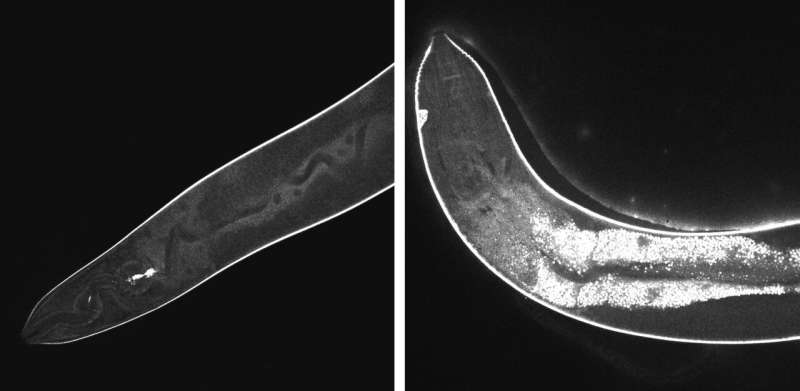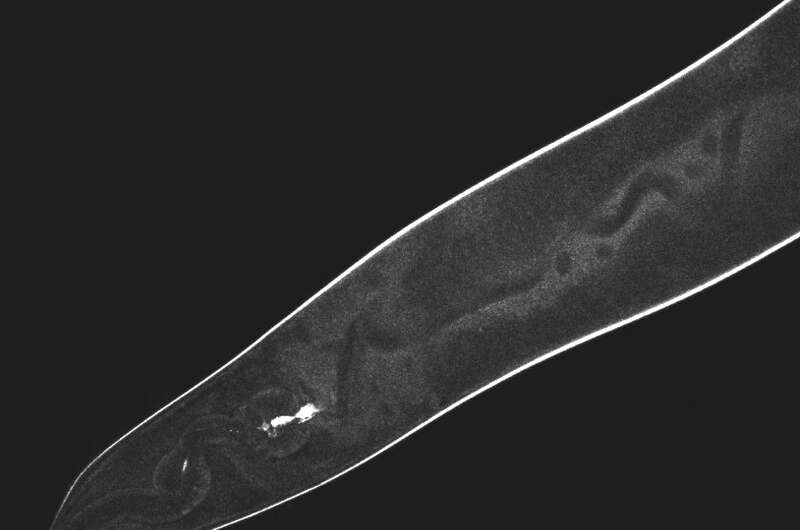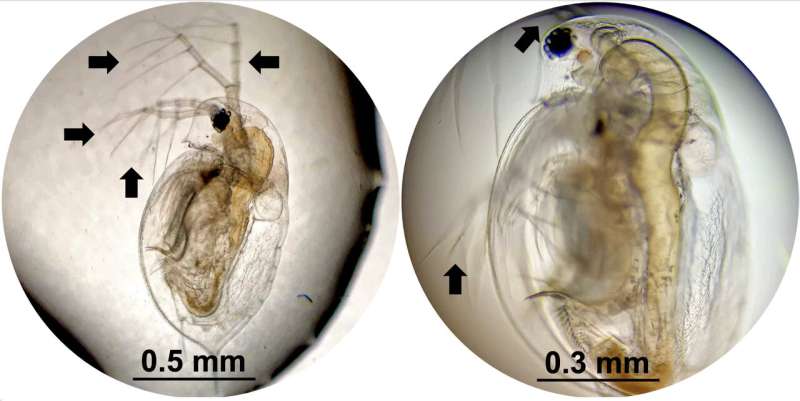Tissue-digging nanodrills do just enough damage

Molecule-sized drills do the damage they are designed to do. That's bad news for disease.
Scientists at Rice University, Biola University and the Texas A&M Health Science Center have further validation that their molecular motors, light-activated rotors that spin up to 3 million times per second, can target diseased cells and kill them in minutes.
The team led by Biola molecular biochemist Richard Gunasekera and Rice chemist James Tour showed their motors are highly effective at destroying cells in three multicellular test organisms: worms, plankton and mice.
A study in the American Chemical Society journal ACS Applied Materials & Interfaces shows the motors caused various degrees of damage to tissues in all three species. The journal plans to designate the paper as an open-access ACS Editors' Choice.
The project's original goal was to target drug-resistant bacteria, cancer and other disease-causing cells and destroy them without damaging adjacent healthy cells. Tour has argued cells and bacteria have no possible defense against a nanomechanical drilling force strong enough to punch through their walls.

"Now it has been taken to a whole new level," Tour said. "The work here shows that whole organisms, such as small worms and water fleas, can be killed by nanomachines that drill into them. This is not just single-cell death, but whole organism, with cell death in the millions.
"They can also be used to drill into skin, thereby suggesting utility in the treatment of things like pre-melanoma," he said.
The researchers saw different effects in each of the three models. In the worm, C. elegans, the fast motors caused rapid depigmentation as the motors first caused nanomechanical disruption of cells and tissues. In the plankton, Daphnia, the motors first dismembered exterior limbs. In both cases, after a few days, most or all of the organisms died.
For mouse models, researchers applied the nanomachines in a topical solution to the skin. Activating the fast motors caused lesions and ulcerations, demonstrating their ability to function in larger animals.

"That mouse skin changes due to the 'drilling' by the nanomachines might be the one of most interesting aspects of the study to scientists," said Gunasekera, an adjunct faculty member and former visiting scientist at Rice and currently associate dean and a professor of biochemistry at Biola. He is co-lead author of the paper with Thushara Galbadage, an associate professor of public health at Biola.
"It could mean direct topical treatment to skin conditions such as melanomas, eczema and other skin diseases," Gunasekera said. "This paper is significant because it's the first testing of nanomachines where we've proven its effectiveness in vivo. All other studies done so far were done in vitro."
He suggested the motors could be used for therapeutic parasite control as well as local treatment of such diseases as skin cancer.
More information: Richard S. Gunasekera et al, Molecular Nanomachines Can Destroy Tissue or Kill Multicellular Eukaryotes, ACS Applied Materials & Interfaces (2020). DOI: 10.1021/acsami.9b22595
Journal information: ACS Applied Materials and Interfaces
Provided by Rice University





















